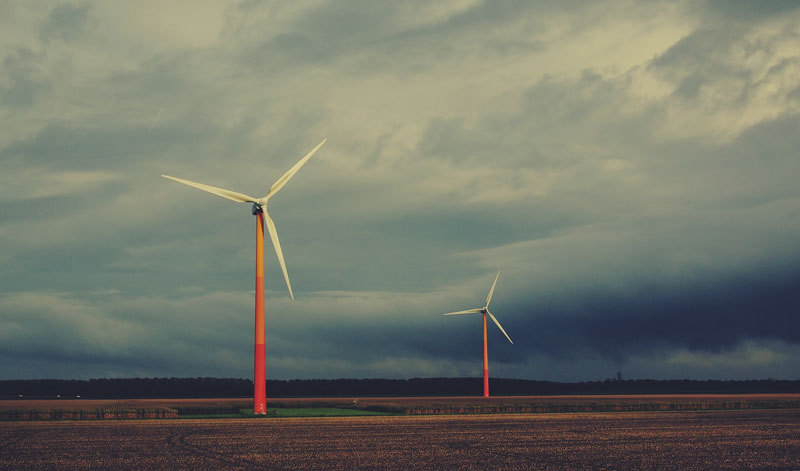FDIC-Insured - Backed by the full faith and credit of the U.S. Government
-
-
-
FNBO
MortgageApr 17 2019
-

Home Green Home
Hugging trees on Earth Day is a wonderful way to celebrate Mother Nature, but why limit your love to a single day when you can keep that loving feeling going all year long?
A great place to start is right in your own home, where there is a variety of ways to show your appreciation for the third rock from the sun. By making your home more eco-friendly, you are not only helping save the earth’s resources, you are also creating ways to save money – and it can be as simple as replacing an old light bulb with a more cost-effective and energy-efficient light bulb.
Temperature control
Insulation is an eco-friendly consideration that is sometimes overlooked because it’s out-of-sight and not usually a top-of-mind thought when it comes to making your home greener. But adding new, more energy-efficient insulation is not only a great way to show Mother Nature you love her, but it’s also a nice way to save on your energy bills.
Insulation made of recycled items, such as newspapers treated with natural fire-retardants, are available and can be blown or loose-filled into walls and your attic, including those hard-to-reach the nooks and crannies, making it a convenient and functional material that helps keep your home warm in the winter and cool in the summer.
Another add-on that helps with temperature control through the changing seasons are ceiling fans. Installed in bedrooms and living areas, ceiling fans circulate air to help keep a home cool in the summer and can reduce the amount of time your air conditioner needs to run, which in turn, can reduce your energy bills.
Ceiling fans are also beneficial in the winter, as they push rising warm air back down to the floor level, which can help reduce heating costs.
Drapes are all-season items as well – in the summer you can shut your drapes to block out the sun during the day and open them in the evening. In the winter, you can do the opposite: Open drapes during the day to let the sunlight in and close them at night to catch the heat.
While you’re focusing on temperature control, you might want to install programable thermostats in your home. You can set the controls to when you’re typically home and when you’re away, which can save significantly on heating and cooling expenses.
And that’s just the beginning
Of course, these considerations are just scratching the surface. There is a seemingly endless list of eco-friendly things you can do to make your home a greener place to live. Here are a few to think about:
- Put a rug on it – Using rugs on wooden floors can help save big on energy bills in the winter by helping retain heat in your home.
- Turn off the water – When you’re brushing your teeth there is no reason for your water to be gushing at full blast for the minute or two that you’re brushing. Turn it off, save water.
- Natural air purifier – Consider skipping the electric air purifiers and instead add house plants to your home. They’re a great way to improve air quality, and they’re decorative, too, especially with fun pots.
- Replace bulbs – You can save up to 65 percent more energy by replacing incandescent light bulbs with compact fluorescent light (CFL) bulbs.
- Air dry – In the summer, try washing your clothes in cold water and then air drying them outside.
- Earth-friendly furniture – When replacing furniture, try to buy pieces made of recycled materials.
- Low-flow is the way to go – Consider installing a low-flow shower head or low-flow toilet to conserve water. Flushing the toilet alone can account for up to 30 percent of a home’s water use.
- Eco-friendly home cleaners – Try to use natural cleaners with no (or less) chemicals than traditional cleaners.
- Recycle – An obvious one here, but recycle those cans, paper products and glass.
- Appliances – When you need to replace an old appliance make sure the new one at least meets Energy Star standards for things like dishwashers and refrigerators. Look at energystar.gov to research models of appliances by manufacturer.
- Try composting – Help reduce the garbage you send to your local landfill and energize your garden’s soil.
- Solar panels – They’re a long-term investment, but the clean electricity is certainly worth it in the long run.
- Seal around windows, add insulation, install smart thermostats – The list goes on and on.
These are a great way to start, especially as we celebrate Earth Day. And be sure to give yourself a high-five for helping Mother Nature. Go green! Go, YOU!
The articles in this blog are for informational purposes only and not intended to provide specific advice or recommendations. When making decisions about your financial situation, consult a financial professional for advice. Articles are not regularly updated, and information may become outdated.